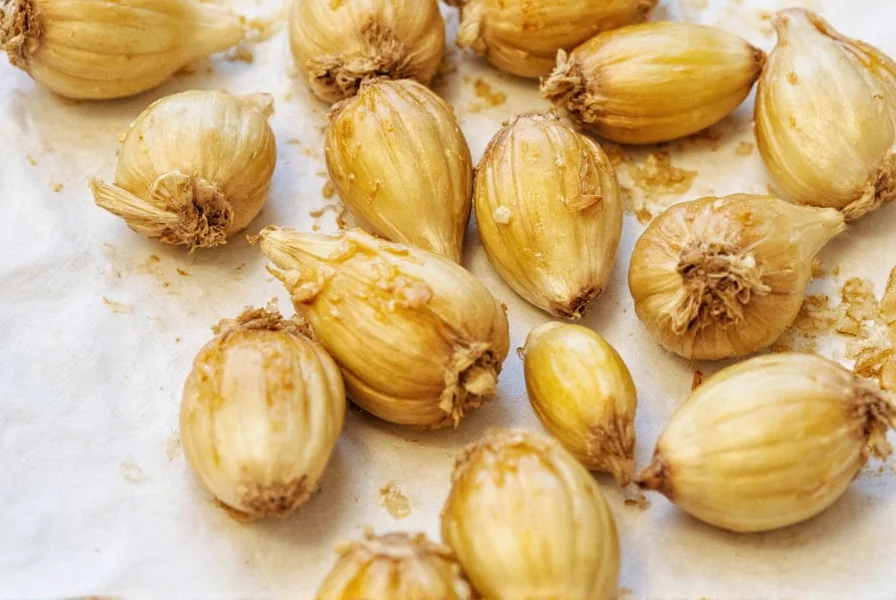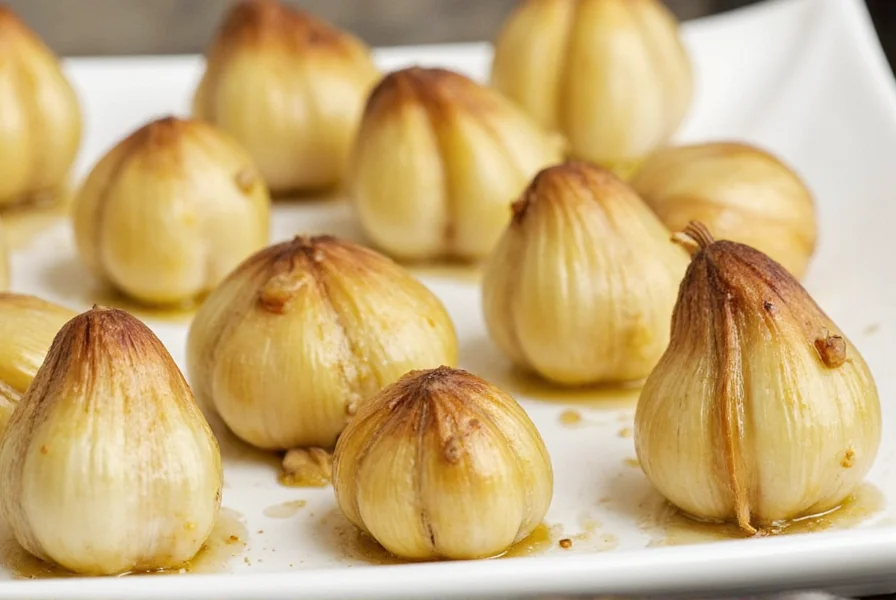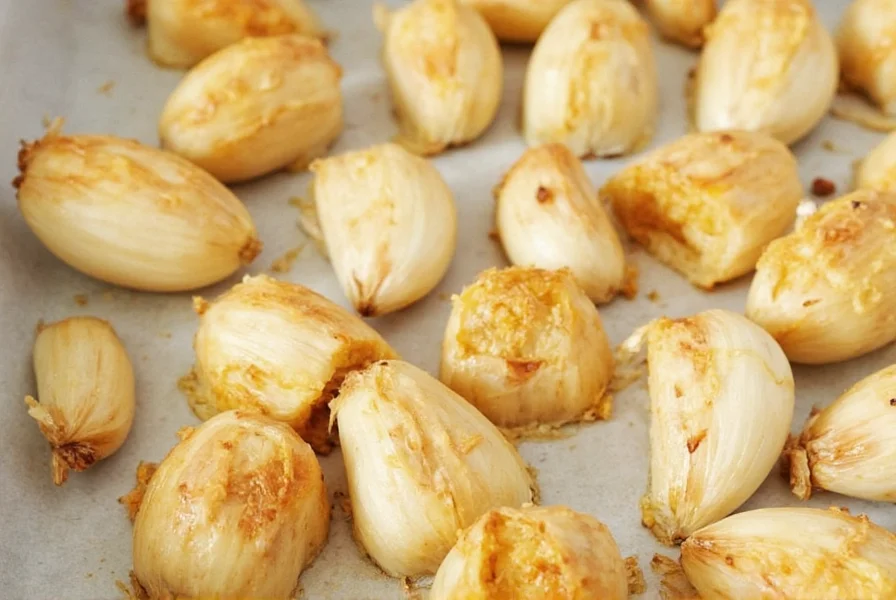Roasted garlic cloves offer a completely different culinary experience from their raw counterparts. The roasting process mellows garlic's sharp bite while enhancing its natural sweetness, creating soft, spreadable cloves that add depth to countless dishes. Unlike whole head roasting which produces paste-like cloves, roasting individual cloves preserves their distinct shape while delivering that coveted caramelized flavor.
Why Roast Individual Garlic Cloves?
While many recipes call for roasting an entire garlic head, focusing on individual cloves provides greater versatility in cooking. You'll get uniformly roasted pieces ideal for salads, pastas, roasted vegetables, or as a standalone condiment. This method gives you precise control over texture and doneness, preventing the uneven cooking that sometimes happens with whole heads.
Essential Equipment for Perfect Roasted Garlic
You don't need specialized tools for this straightforward technique. Gather these basic kitchen items:
| Item | Purpose | Alternative |
|---|---|---|
| Baking sheet | Provides even heat distribution | Aluminum foil-lined tray |
| Parchment paper | Prevents sticking and simplifies cleanup | Lightly oiled baking sheet |
| Small mixing bowl | For tossing cloves with oil and seasonings | Ziplock bag |
| Metal spatula | For turning cloves during roasting | Wooden skewer |
Step-by-Step Guide to Roasting Garlic Cloves
Preparation (5 minutes)
Start by peeling your garlic cloves. For quick peeling, place cloves in a sealed container and shake vigorously, or crush them lightly with the flat side of a knife to loosen skins. You'll need:
- 12-15 garlic cloves (about 1½ heads)
- 1½ tablespoons extra virgin olive oil
- ¼ teaspoon sea salt
- Optional: ½ teaspoon dried herbs (rosemary, thyme, or oregano)
Toss the peeled cloves with olive oil, salt, and any chosen herbs in a small bowl until evenly coated. Proper oil coverage prevents burning while promoting even browning.
Roasting Process (15-20 minutes)
Preheat your oven to 400°F (200°C). Arrange the coated cloves in a single layer on a parchment-lined baking sheet, ensuring they don't touch. This spacing prevents steaming and promotes caramelization.

Roast for 15-20 minutes, turning the cloves halfway through cooking. Watch carefully during the final minutes—garlic can burn quickly. The cloves are done when they're golden brown, tender when pierced with a fork, and slightly shrunken. They should feel soft but maintain their shape.
Testing for Doneness
Don't rely solely on timing. Perfectly roasted garlic cloves should:
- Yield easily to gentle pressure from a fork
- Show golden brown coloring (not pale or dark brown)
- Release a sweet, nutty aroma (not sharp or acrid)
- Feel soft when gently squeezed
Pro Tips for Exceptional Roasted Garlic
Master this simple technique with these professional insights:
Temperature Control Matters
While 400°F delivers optimal results for most home ovens, adjust based on your specific appliance. Convection ovens may require reducing the temperature by 25°F (15°C) or shortening cooking time. Higher temperatures (425°F/220°C) create more caramelization but increase burning risk.
Variations to Elevate Your Roasted Garlic
Customize your roasted garlic cloves with these easy enhancements:
- Lemon zest addition: Toss with lemon zest before roasting for bright citrus notes
- Balsamic option: Add ½ teaspoon balsamic vinegar to the oil mixture for complex sweetness
- Spicy version: Include a pinch of red pepper flakes for subtle heat
- Herb-infused oil: Use oil previously infused with herbs for deeper flavor penetration
Storage and Culinary Applications
Properly stored roasted garlic maintains quality for future use:
Storage Guidelines
Cool roasted cloves completely before storing. Keep them in an airtight container:
- Refrigerator: Up to 5 days in a container with a thin layer of olive oil
- Freezer: Up to 3 months in ice cube trays covered with oil, then transferred to freezer bags
Delicious Ways to Use Roasted Garlic Cloves
These versatile morsels enhance countless dishes:
- Stir directly into mashed potatoes or roasted vegetables
- Add to salad dressings for depth without raw garlic's bite
- Blend into mayonnaise for gourmet sandwiches
- Toss with pasta during the final minute of cooking
- Place atop grilled meats or fish before serving
- Press into compound butter for bread or steak

Troubleshooting Common Roasting Issues
Preventing Burnt Garlic
If your garlic consistently burns:
- Reduce oven temperature to 375°F (190°C)
- Check for doneness starting at 12 minutes
- Ensure cloves are evenly coated with oil
- Avoid using dark-colored baking sheets which absorb more heat
Addressing Uneven Cooking
For uniformly roasted cloves:
- Select cloves of similar size
- Turn cloves halfway through roasting
- Maintain proper spacing on the baking sheet
- Rotate the baking sheet front-to-back in the oven
Frequently Asked Questions
How long does it take to roast garlic cloves at 400 degrees?
Garlic cloves typically roast perfectly in 15-20 minutes at 400°F (200°C). Start checking at 15 minutes—cloves should be golden brown and tender when pierced with a fork. Smaller cloves may finish in as little as 12 minutes, while larger ones might need the full 20 minutes.
Can I roast garlic without peeling the cloves first?
Yes, you can roast unpeeled garlic cloves, but the results differ significantly. Unpeeled cloves steam rather than roast, creating a softer texture with less caramelization. The skin also makes them harder to remove after roasting. For the best flavor and texture, peel cloves before roasting.
What's the difference between roasted garlic cloves and roasted whole garlic heads?
Roasting individual cloves preserves their shape and creates distinct pieces ideal for adding to dishes, while whole head roasting produces a soft paste. Individual cloves caramelize more thoroughly with greater surface area exposed, resulting in deeper flavor. Whole heads yield milder, more uniform paste perfect for spreading.
Why are my roasted garlic cloves still hard after 20 minutes?
Hard roasted garlic usually indicates insufficient heat or overcrowding. Ensure your oven is properly preheated to 400°F (200°C), not just set to that temperature. Space cloves evenly on the baking sheet with room between them. Larger cloves may need additional time—check every 2-3 minutes until tender. Oven calibration issues could also affect results.
Can I use roasted garlic cloves in place of raw garlic in recipes?
Yes, but adjust quantities since roasted garlic has milder flavor. Use 1½ times the amount of roasted garlic compared to raw for similar flavor impact. Remember that roasted garlic adds sweetness rather than sharpness, so it works best in dishes where you want subtle garlic notes rather than pronounced bite. It's excellent in creamy sauces, dressings, and as a finishing element.











 浙公网安备
33010002000092号
浙公网安备
33010002000092号 浙B2-20120091-4
浙B2-20120091-4